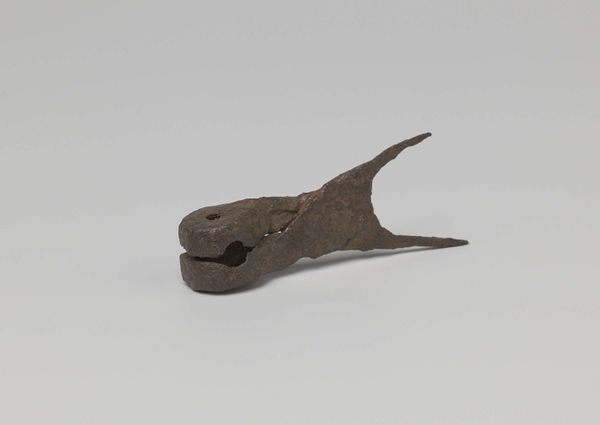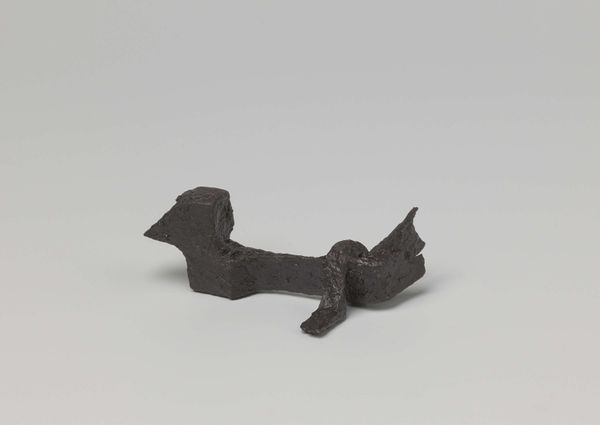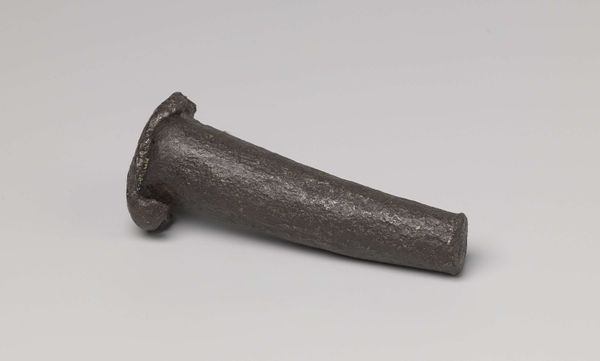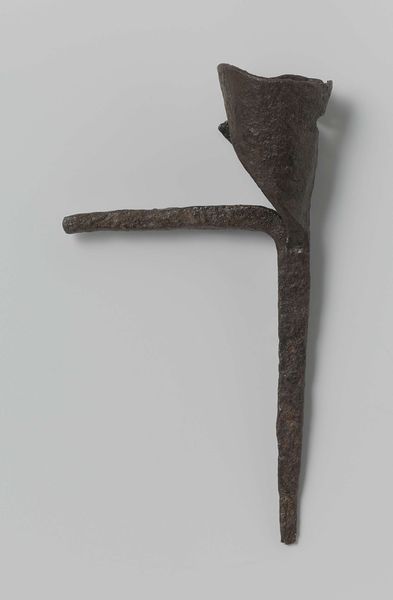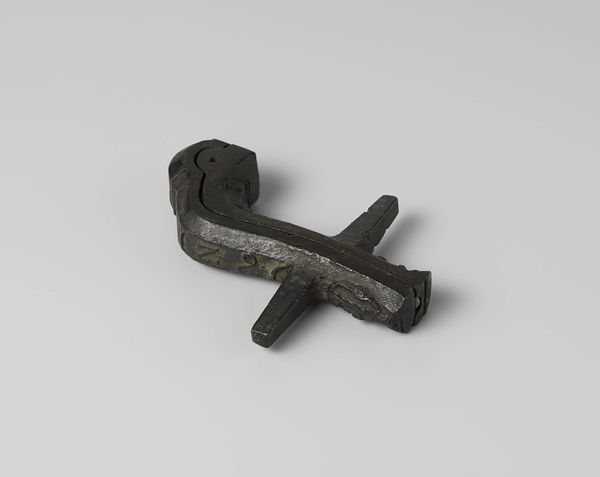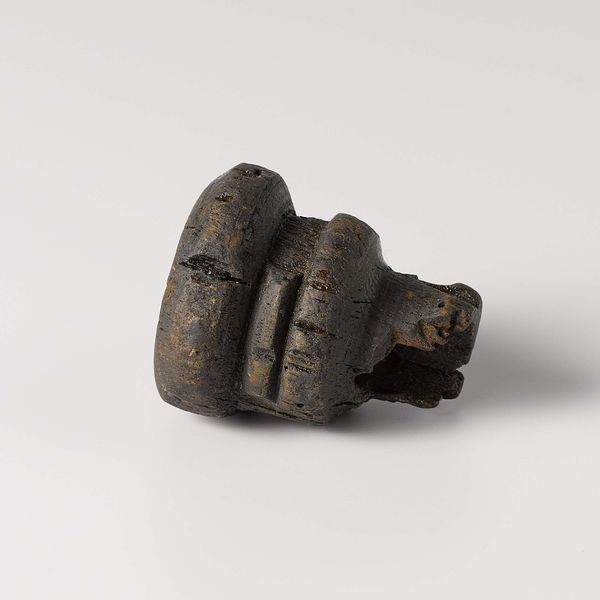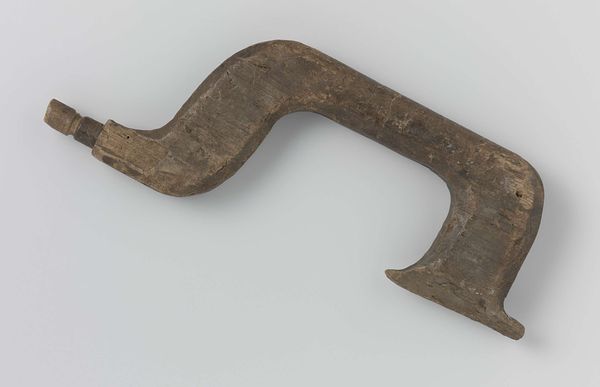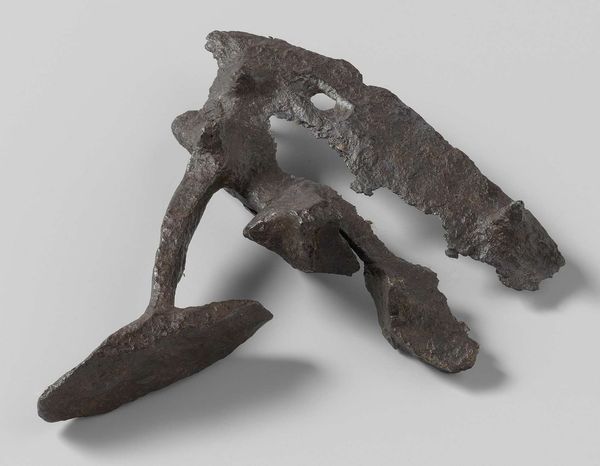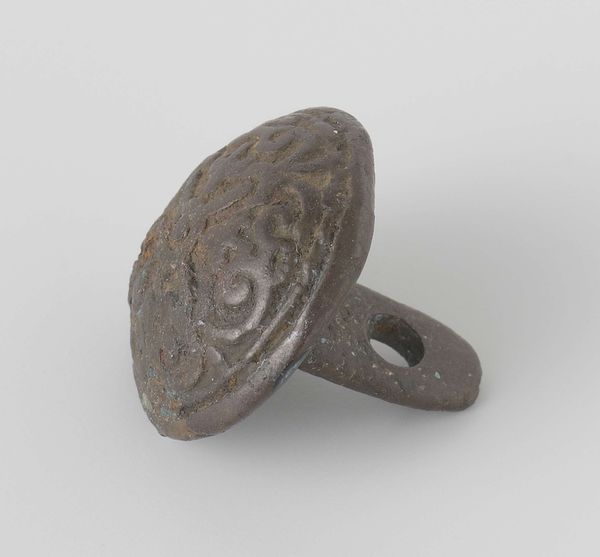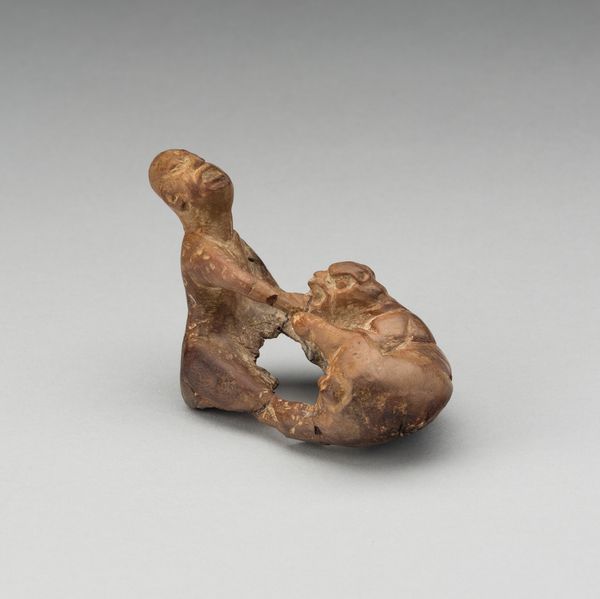
Hamertje van ijzer met een afgeplat uiteinde en een uiteinde dat uitloopt in een krul c. 1590 - 1596
0:00
0:00
metal, sculpture
#
medieval
#
metal
#
form
#
geometric
#
sculpture
Dimensions: width 8.9 cm, height 6.5 cm, depth 2.3 cm
Copyright: Rijks Museum: Open Domain
Curator: Before us is a late 16th-century hammer, crafted from iron, its handle terminating in an elegant scroll. While its creator remains anonymous, we know it dates to around 1590-1596 and resides here at the Rijksmuseum. Editor: My first thought is how unassuming it appears, yet how intensely the means of its making speaks to a historical craft of manual work. It looks small, functional, but also, unexpectedly, ornamented. Curator: Ornamentation indeed! Consider the implications of a common tool imbued with artistic flourish. The period was one of immense social and religious upheaval across Europe. Did such embellishments signal the importance of labour, perhaps even challenge emerging class hierarchies through artistry applied to functional objects? Editor: Absolutely. And observe how the form dictates its function; the flattened end and that distinct curl shape at the opposite end. We see the social imprint upon the object through those traces of handcrafting, shaping the material world in an explicit manifestation of skill and labour. What would this have felt like to hold? Curator: Holding this hammer conjures so many potential stories. Beyond purely aesthetic choices, the curl shape hints at a social space perhaps? Might the curl offer more stability, or does it address ergonomics from a human perspective. Consider a different narrative—if the iron comes from contested territory—is the making and selling also potentially entangled in exploitation? Editor: Iron ore’s extraction would certainly involve considerable, often brutal, labor. Reflecting on this hammer in isolation risks obscuring those wider material networks of the era. How labor relations influence our appreciation for craftsmanship, and ultimately, how we value its aesthetic. Curator: Precisely! An object lesson in seeing art not as existing separately from life but deeply entwined with all of it – even its ugliest parts, thus holding within itself its full cultural biography! Editor: Examining a tool like this lets us reassess and renegotiate our relationship to utility. The artist imprints so much on this everyday tool. Perhaps this could inspire us to see beauty everywhere, as inherent within the structures of everyday life and the reality of its making?
Comments
No comments
Be the first to comment and join the conversation on the ultimate creative platform.
